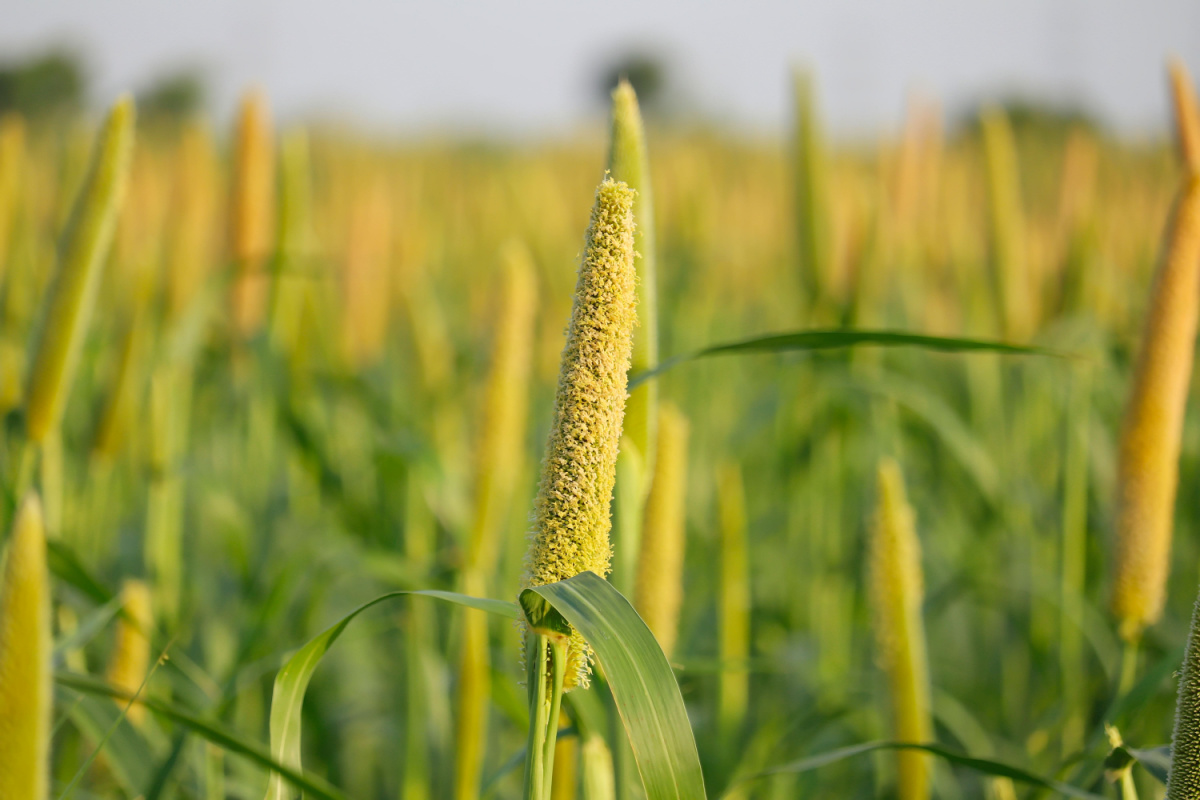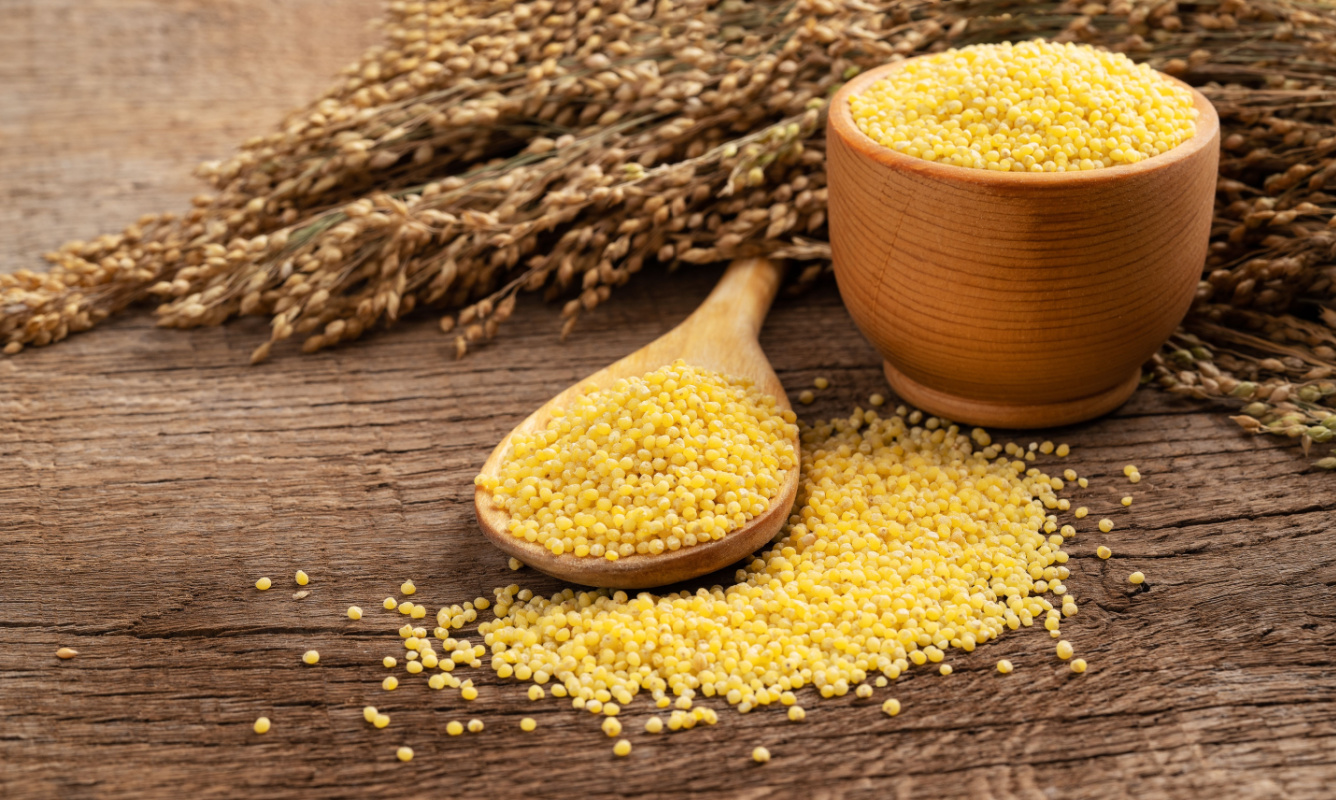
Amaranth millet (Rajgira)
Amaranth (Amaranthus caudatus), often referred to as amaranth millet, is a pseudocereal that has gained
Millets are rich in fiber, protein, and essential vitamins and minerals, making them highly nutritious and beneficial for a balanced diet.
Naturally gluten-free, millets are ideal for those with celiac disease or gluten intolerance, serving as a substitute for wheat and other grains.
Millets can be used in porridges, flatbreads, salads, soups, and baked goods, offering nutritional benefits and culinary versatility across various cuisines.
Millets thrive in arid and semi-arid regions, requiring less water and showing resilience to pests and diseases, making them a sustainable crop choice.

Welcome to SHREEANNAS.COM a premier destination for all millets related queries. Its a mission to revolutionize these ancient grains to be perceived and incorporated into your lifestyle. Join the journey to explore the rich history, unparalleled nutritional benefits, and endless culinary possibilities of millets.
Our Mission
At ShreeAnnas.com, our mission is to revolutionize the way the world perceives and consumes millets by promoting their therapeutic and functional properties. We aim to empower individuals with knowledge about the nutritional benefits, diverse recipes, and diet plans centered around millets, making them a staple in everyday diets. Through our comprehensive platform, we strive to enhance the availability, accessibility, and affordability of millets, fostering sustainable agricultural practices and supporting local farmers. Our goal is to create a healthier, more sustainable future for all by making millets an integral part of global nutrition.
Millet products have surged in popularity due to their nutritional richness and culinary versatility. Found in various forms like flour, flakes, and snacks, they are now widely available in local stores and online platforms while still not accessible to common households. Millets, comprising grains like sorghum and finger millet, offer a sustainable and nutritious alternative to conventional grains.
Millets go beyond traditional usage, fitting into a diverse array of dishes, from savory meals to sweet treats. This versatility makes them an attractive option for those seeking both health benefits and culinary enjoyment.
Millets host a robust nutritional profile, being rich in fiber, vitamins, and minerals. They are gluten-free and contain essential nutrients like magnesium and antioxidants, contributing to improved digestion and sustained energy levels. Millets align with modern dietary preferences, making them an excellent choice for a healthier lifestyle.
Explore the world of millets with us as we delve into delectable recipes, uncovering the nutritional treasures these ancient grains offer.

Millet are a group of small-seeded grasses that have been cultivated for thousands of years as a food source. They are widely grown and consumed in many parts of the world, especially in Asia and Africa. Millets are known for their nutritional value, resilience to harsh environmental conditions, and versatility in culinary applications. Some common types of millets include:

Amaranth (Amaranthus caudatus), often referred to as amaranth millet, is a pseudocereal that has gained

Browntop millet, scientifically known as Urochloa ramosa, is a warm-season grass from the Poaceae family.

Buckwheat (Fagopyrum esculentum), also known as kuttu in India, is a type of millet that

Kodo millet, originally from tropical Africa, is thought to have been cultivated in India some

Millets, small seeded grasses, are highly nutritious and even outperform basic cereals like rice and

Ragi, also known as finger millet (Eleusine coracana L.), is widely grown in India. This
The flow of work related to millets encompasses various aspects, including growth, production scenarios, agricultural specifications, plant parts, and economical considerations:
Understanding the optimal growth conditions, including climate, soil type, and water requirements.
Planning and preparing fields for millet cultivation, considering crop rotation and soil health.
Adhering to recommended agricultural practices, such as planting depth, spacing, and fertilization.
Understanding the different parts of the millet plant, including seeds, stems, leaves, and roots.
Assessing the economic viability of millet cultivation, considering input costs and potential yields. Exploring market demand and pricing dynamics for millet products. Evaluating the overall economic benefits of millet cultivation for farmers and the community.
Various diet plans are designed to address specific lifestyle-related problems and promote overall health and well-being.
Millet offer a range of health benefits, contributing to a nutritious and balanced diet. Some key advantages include:
Millets are packed with essential nutrients like fiber, vitamins (especially B-complex vitamins), minerals (iron, magnesium, phosphorus), and antioxidants.
Millets are naturally gluten-free, making them a suitable grain choice for individuals with gluten intolerance or celiac disease.
Millets are an excellent source of dietary fiber, promoting digestive health, preventing constipation, and providing a feeling of fullness.

Millets are a group of small-seeded grains, widely cultivated for food and fodder. They are known for their nutritional value, resilience, and adaptability to various climatic conditions.
Millets are rich in nutrients, including fiber, vitamins, and minerals. They offer health benefits such as improved digestion, heart health, and blood sugar control.
Commonly consumed millets include sorghum (jowar), finger millet (ragi), pearl millet (bajra), foxtail millet (korralu), little millet, and proso millet, among others.
Yes, millets are naturally gluten-free, making them a suitable grain choice for individuals with gluten intolerance or celiac disease.
Millets can be used to prepare various dishes such as porridge, flatbreads, salads, and desserts. They can also be used as a substitute for rice or other grains in recipes.
Yes, millets are considered environmentally sustainable as they are hardy crops requiring fewer inputs like water and pesticides compared to major grains.
Millets are nutritionally dense, containing fiber, protein, vitamins (especially B-complex vitamins), and minerals (iron, magnesium, phosphorus).
Certain millet varieties, like finger millet, are known for their high calcium and iron content and are often recommended for conditions such as anemia and bone health.
Millet cultivation involves factors like selecting suitable varieties, preparing fields, implementing sustainable farming practices, and managing pests and diseases.
Challenges in promoting millet consumption globally include lack of awareness, limited processing infrastructure, and the dominance of other staple grains in certain regions. Efforts are underway to address these challenges and promote millets as a nutritious and sustainable food source.
